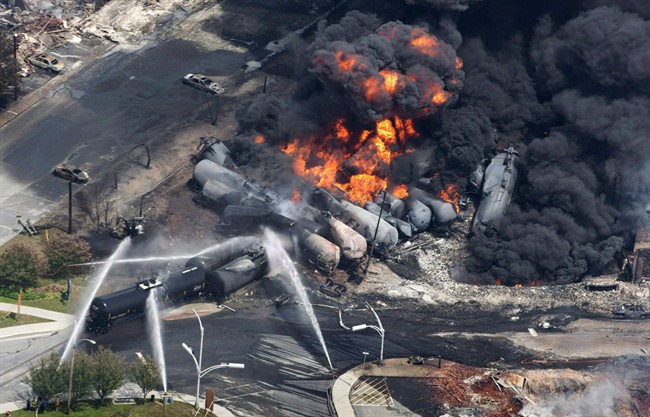WINNIPEG — Everyday more than 400 rail cars carry hazardous materials through the city.

Including the same explosive materials that caused one of the biggest rail catastrophies in Canada. 47 people were killed in Lac Megantic, Quebec in 2013 when a speeding runaway train went off the tracks and exploded in the middle of town.
READ MORE: Lac-Mégantic victims may soon receive settlement money
“It was a big war zone,” Jean-Claude Morin spent nearly 50 days cleaning up the spilled materials which burned for 27 hours. He’s speaking about his experience at the Disaster Management Conference in Winnipeg this week.
“It was a big task that nobody is ready to face but we did it,” Morin said.
But Manitoba’s emergency coordinators want to be ready.
“It captured everyone’s attention,” Lee Spencer, the Assistant Deputy Minister for Emergency Measures said. “Could it happen in my back yard? Of course it could happen in my back yard but what can we learn from what happened ther,e how can we change what we do?”
Morin says one of the major challenges in Lac Megantic was the lack of communication and people working together. A mistake Manitoba is making sure isn’t repeated.
“We’re working right now on a joint response program with all government response agencies to make sure we are all better coordinated,” Spencer said. “Learn from what happened in Lac Megantic.
Morin says everything that went wrong in Lac Megantic, did. The train was unmanned, it was going downhill and speeding more than 100 kilometers an hour towards town.
He says that exact scenario wouldn’t happen in Winnipeg but says something just as catastrophic could.
“We don’t have to put our head between our legs,” Morin said. “Yes something could happen, we don’t know when but it will happen. Maybe never in Winnipeg but maybe somewhere else.”
The conference takes place every 18 months in Winnipeg. The other events being discussed are the Otterburne natural gas explosion, the Parliament Hill shooting and the Elliot Lake mall roof collapse.




Comments